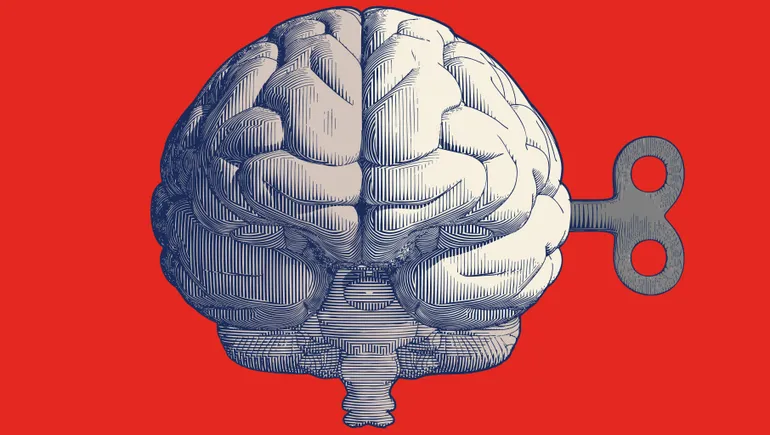The silver lining around Lilly’s Alzheimer’s delay could be a future with better drugs

An unusual delay in the FDA’s action date for the Alzheimer’s disease drug donanemab from Eli Lilly came as a surprise for the pharma giant, as well as patients and advocacy groups hoping to see more disease-modifying treatments available on the market.
But could there be a silver lining for the future of Alzheimer’s treatment beyond the recent wave of amyloid-beta targeting drugs?
Although donanemab and its amyloid-targeting predecessors Aduhelm and Leqembi — both from partners Biogen and Eisai — are the first drugs shown to potentially slow disease progression, regulators and payers have taken extra precautions to ensure the benefits outweigh the risk.
In a phase 3 trial, almost half of participants receiving donanemab showed no decline on one of the key cognitive rating scales of Alzheimer’s after one year compared to less than a third on placebo.
The FDA’s delay, brought on by a decision to hold an advisory committee meeting for a safety and effectiveness review of clinical studies, pushes the timeline further out than the expected target at the end of March. Without an adcomm date set in stone, the company didn’t speculate on when a decision might be made.
The news adds to the controversy that has plagued the Alzheimer’s space as these new drugs have rolled out, beginning with a fiasco surrounding Aduhelm. Late-stage studies showed muddy results, and the FDA approved the drug 2021 despite an advisory committee’s hesitancy, and many payers including Medicare ultimately refused to cover the treatment. At the end of the day, Biogen and Eisai pulled Aduhelm from the market.
But experts this time around are optimistic the delayed review process will help — not hinder — Lilly’s donanemab in the long run by establishing concrete safety and efficacy data, as well as a renewed confidence in drugmakers’ ability to design trials in innovative ways.
“These trials set the groundwork for future trials … that can give us reliable answers, and that’s a real breakthrough.”

Dr. Howard Fillit
Co-founder, chief scientific officer, Alzheimer’s Drug Discovery Foundation
A welcome delay
Although any regulatory delay is considered detrimental to a drug’s performance against competition that’s already on the market, in Lilly’s case the outcome could be different.
“Generally speaking, it’s unusual for the FDA to arrange an adcomm meeting this late in the review cycle — that being said, I don’t think it’s necessarily a negative,” said Dr. Howard Fillit, co-founder and chief scientific officer of the Alzheimer’s Drug Discovery Foundation. “One of the things the FDA probably realized is that the clinical trial had two innovative features.”
Fillit pointed to a limited dosing regimen, in which patients with a negative amyloid PET scan could stop taking donanemab to reflect how diagnosis and treatment would work in the real world. The second innovation came about as a “goldilocks” measure, using tau imaging to determine whether a patient fits in the window for donanemab’s effective range — not too early and not too late.
Lilly’s trial innovation could allow for a cleaner regulatory process than Aduhelm’s and build on the success of Leqembi’s, Fillit said. And the technology to detect Alzheimer’s disease has grown to a point that allows for better understanding of the drugs that can be of the most benefit to patients.
“I think what you’re seeing now with these approvals is a maturation of the field — in 40 years we’ve been doing this, we finally have the kind of neuroimaging and spinal fluid and blood tests that are so critical to precision drug development,” Fillit said. “These trials set the groundwork for future trials … that can give us reliable answers, and that’s a real breakthrough.”
Beyond amyloid
Amyloid-targeting drugs have demonstrated clinical advances in Alzheimer’s treatment, but many researchers in the field, including Fillit, see these therapies targeting only beta amyloid as a stepping stone to more precise understanding of the disease down the road.
“We are redefining Alzheimer’s disease,” Fillit said, pointing to the origins of diagnosis among elderly people with dementia whose brains showed evidence of plaques and tangles in an autopsy. “It turns out that looking at the brain of an older person is like the parable of a blind man touching an elephant and trying to describe it.”
For example, brain inflammation often accompanies Alzheimer’s and is a hallmark of aging, Fillit said. That has driven a good deal of interest in reducing inflammation to slow progression of the disease.
More novel treatments with new targets are being studied each year. About a decade ago, about three-quarters of all Alzheimer’s drugs in development were anti-amyloid or anti-tau, Fillit saif — now, researchers have flipped the script, and “75% of the drugs in development today are non-amyloid, non-tau,” he said.
Like cancer, Alzheimer’s comes about as the result of many different factors, and researchers don’t yet know all of them. While some might benefit from anti-amyloid or anti-tau drugs, others might see improvement from drugs that employ autophagy to remove misfolded, toxic proteins from the brain. Managing diabetes and hypertension could also play a role in Alzheimer’s treatment, as well as epigenetic changes to protein structure, Fillit said.
“We have proof of concept that aggregates of beta amyloid plaques play a role in the disease, but it’s also clear that it’s not 100%,” Fillit said. “All other diseases of old age require a combination approach with multiple biomarkers and combination products that address multiple pathways of illness. The next generation of Alzheimer’s drugs will be precision medicine with combination therapy.”
Source link
#silver #lining #Lillys #Alzheimers #delay #future #drugs